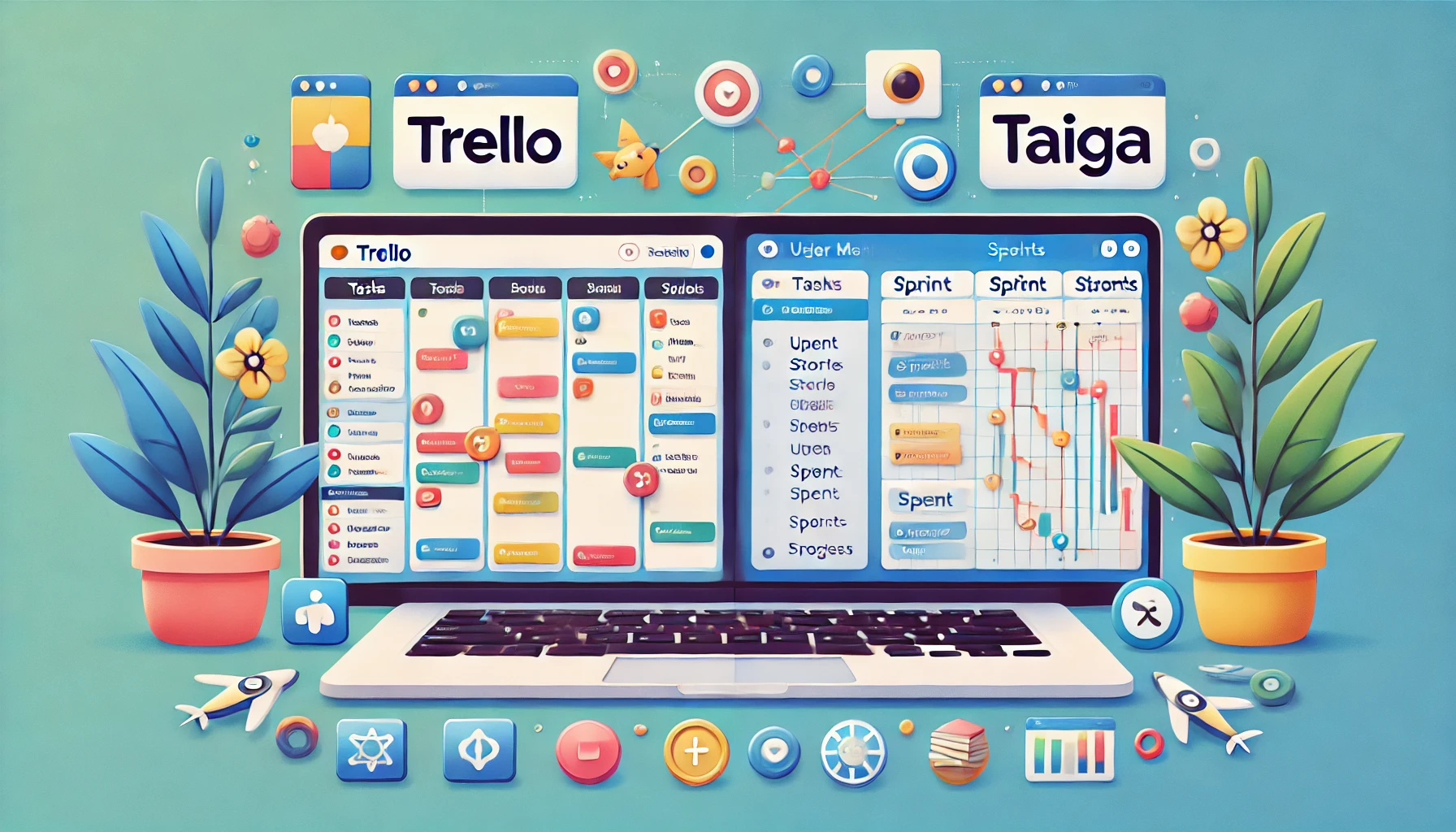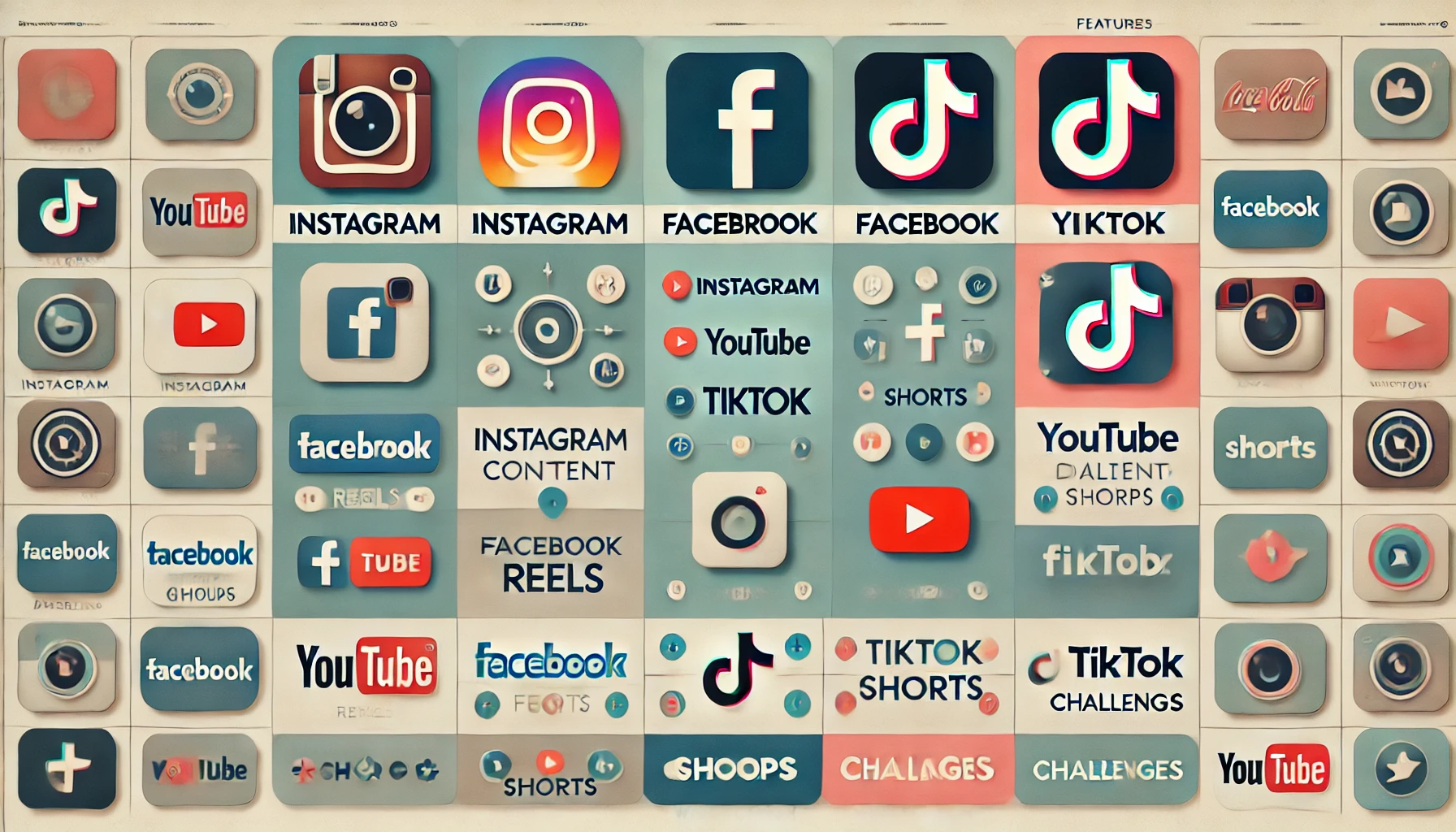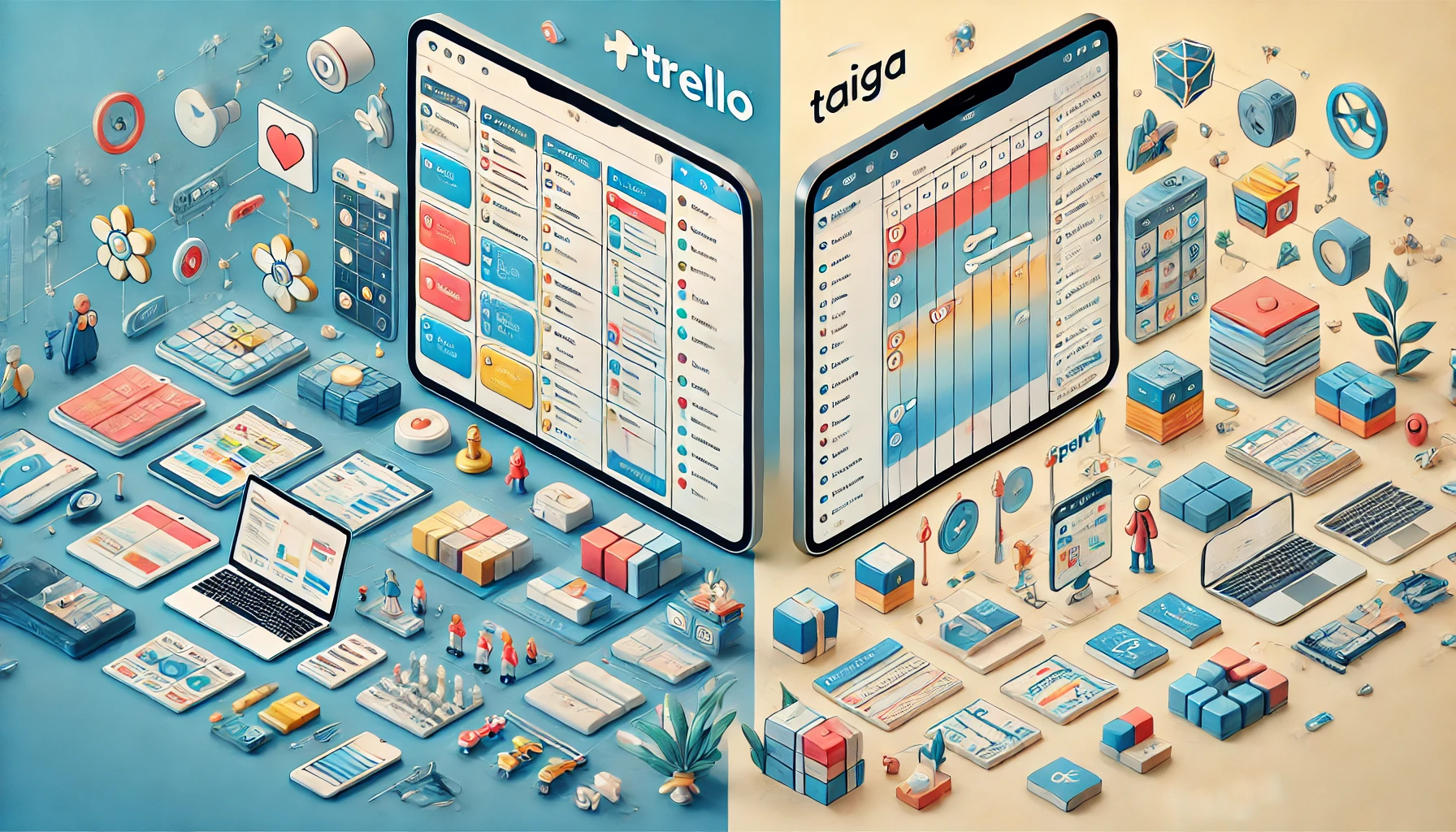When it comes to organizing projects, tracking tasks, and managing workflows, two platforms that often come up are Trello and Taiga. Both are designed to help individuals and teams stay on top of their work, but they cater to slightly different audiences and come with distinct features. Whether you’re managing a small personal project or handling a complex team initiative, knowing the strengths and limitations of each tool is crucial.
So, which one should you choose? Let’s dig into what each platform offers, where they shine, and where they might fall short.
A Quick Overview: What Are Trello and Taiga?
Before we get into specifics, let’s do a quick run-through of what each platform is all about. Trello, launched by Fog Creek Software in 2011, is a visual project management tool known for its simplicity and flexibility. Trello is centered around “boards” and “cards,” which provide a straightforward way to track tasks in a Kanban-style view.
Taiga, on the other hand, is an open-source project management platform that launched in 2014. It’s tailored more toward agile teams and developers. Taiga offers features for sprint planning, backlog management, and issue tracking—ideal for those working in software development or agile environments. While it also supports Kanban boards, Taiga leans heavily into agile project methodologies and offers more robust tools for handling these workflows.
Interface and Usability: Simplicity vs. Customization
Trello: User-Friendly and Straightforward
Trello’s biggest strength is its ease of use. The platform’s clean, card-based interface is easy to understand and quick to set up, making it a popular choice for freelancers, small businesses, and anyone who wants a no-fuss tool. Trello’s interface is drag-and-drop, allowing users to move cards (tasks) between columns that represent different stages in the workflow—like “To Do,” “In Progress,” and “Done.”
But simplicity can sometimes mean limitations. Trello doesn’t offer much out-of-the-box functionality for complex project needs, like Gantt charts or burndown charts, unless you use third-party integrations. That said, Trello has a marketplace for “Power-Ups”—essentially app integrations—that can fill in some of these gaps, allowing you to add automation, reporting, and calendar views.
Pro Tip: If you’re working solo or with a small team and don’t need elaborate tracking features, Trello’s simple setup is often more than enough.
Taiga: Powerful and Customizable for Agile Workflows
Taiga, by contrast, is designed for those who want more control over their project processes. It has both Kanban and Scrum boards, making it well-suited for agile teams who work in sprints. Taiga’s dashboard includes burndown charts, backlog views, and sprint management tools, catering to teams that need detailed reporting and metrics.
The downside? Taiga’s customization can make it a bit more complicated to set up, especially if you’re new to agile methodologies. And while it’s visually clean, it doesn’t have the same intuitive, drag-and-drop simplicity that Trello has. That said, once you get the hang of it, Taiga’s robust feature set can be a huge asset for teams that require more than just basic task tracking.
For agile-focused teams or developers, Taiga’s feature set is often more aligned with their needs. However, for non-technical users or those unfamiliar with agile workflows, it may feel like a bit much.
Pro Tip: Taiga offers an open-source version, so you can set it up on your own server if privacy or customization is a high priority.
Features Face-Off: What Each Platform Brings to the Table
Task Management and Collaboration: Simple vs. Detailed
When it comes to task management, Trello keeps things straightforward. You create a board, add lists, and then create cards within those lists. Each card can hold a surprising amount of detail—due dates, attachments, comments, and checklists. Trello also supports tagging and assigning tasks to team members, though it lacks more advanced task management options like dependencies (unless you use Power-Ups).
Taiga’s task management is more advanced, especially for technical teams. It includes user stories, sprint planning, and even bug tracking for teams that need a complete software development workflow. Collaboration on Taiga is well-supported, with options for commenting, setting up dependencies, and even tracking issues in software projects. However, it can feel overwhelming if you’re only looking to manage simpler projects.
If you’re working in a cross-functional team or with clients who need a straightforward view of progress, Trello’s simple task structure can be more accessible. But for dev teams or agile purists, Taiga’s added depth will likely be more useful.
Project Flexibility: Integrations and Extensions
Trello: Power-Ups for Added Functionality
One of Trello’s major strengths lies in its Power-Ups—integrations that expand its basic capabilities. Trello’s Power-Up library has options for all sorts of functionalities: time tracking with apps like Toggl, communication via Slack, calendar views with Google Calendar, and even analytics with tools like Blue Cat Reports. These add-ons can transform a basic Trello board into a more comprehensive project management system, but some Power-Ups are only available on paid plans.
There’s a catch, though. Trello’s reliance on Power-Ups means that without them, its core offering can feel a bit limited. For instance, while Trello’s card-based design works great for Kanban-style task tracking, adding more complex project management elements, like Gantt charts or budget tracking, requires third-party integrations. And as projects scale up, juggling multiple Power-Ups can get overwhelming.
Pro Tip: Stick to a few essential Power-Ups that fit your team’s needs instead of overloading your board with too many add-ons—it keeps things manageable.
Taiga: Open-Source Flexibility and Built-In Agile Features
Taiga is open-source, which is a huge win if you’re looking for customization without depending on third-party tools. This flexibility allows teams to tweak the platform to their specific needs (if they have the technical expertise), and its built-in agile tools mean that it’s often ready to go for sprint-driven projects without any add-ons.
Since Taiga is designed with agile teams in mind, it has a lot of features you’d need from the start: burndown charts, sprint management, and even project and task filtering options. That said, Taiga’s extension options aren’t as extensive as Trello’s, which could limit non-development projects that require niche integrations.
Pricing: Free Versions and Paid Plans Compared
When it comes to pricing, both Trello and Taiga offer free versions, but each has its own approach to paid plans and premium features.
Trello: Flexible Free Plan with Paid Power-Ups
Trello’s free plan includes unlimited boards, lists, and cards, which is sufficient for small projects or individuals. However, the free version only allows one Power-Up per board, so if your project requires several integrations, you’ll need to upgrade. Trello’s paid plans start at $5 per month per user and include unlimited Power-Ups, advanced checklists, and dashboard views that give you a broader perspective of project progress.
The Enterprise plan, which is geared toward larger organizations, offers features like admin controls, organization-wide permissions, and advanced security options. However, Trello’s paid options can get costly for larger teams since it’s priced per user.
Taiga: Affordable Premium Options and Open-Source Hosting
Taiga’s free plan is robust, offering unlimited public projects and limited private projects (usually three for free-tier users). If you need more privacy or project-specific customization, Taiga’s premium plan costs around $5 per month per user, similar to Trello. This plan includes unlimited private projects, priority support, and a few other perks like project templates and reporting tools.
Where Taiga shines for companies is in its on-premises installation option. With this self-hosted version, you can install Taiga on your own servers, allowing full control over your data, security settings, and customizations. The open-source version also means you avoid monthly fees entirely if you host it yourself—ideal for tech-savvy teams with specific privacy requirements.
Who Wins? Best Use Cases for Trello and Taiga
Trello Is Best For…
If you’re working on straightforward projects, Trello is a fantastic choice. It’s perfect for personal projects, small teams, or organizations that need a clean, intuitive tool that anyone can quickly pick up. It’s particularly popular with marketing teams, remote freelancers, and small businesses thanks to its easy onboarding and the versatility of Power-Ups.
Taiga Is Best For…
For software development teams or anyone following an agile framework, Taiga is often a better choice. Its built-in support for sprints, issue tracking, and detailed backlog management makes it the go-to for agile teams. It’s also ideal for companies that prefer open-source options or need privacy controls, like tech startups, product development teams, and research groups.
Which Platform is Right for You?
In the end, your choice depends on the specifics of your projects and your team’s requirements. If you need a simple, visual tool with plenty of integrations, Trello is a solid option that doesn’t require much time to learn. Its Power-Ups allow for customization, and its Kanban-style boards work well for a variety of workflows.
Taiga, on the other hand, is perfect for agile project management, especially for development teams that need detailed sprint planning and issue tracking. Its open-source nature gives you the flexibility to host it yourself, which can be a game-changer for companies with strict data privacy or customization needs.
For those balancing between ease and complexity, consider trying out both platforms’ free versions to see which feels like the best fit. After all, the ideal tool is one that adapts to your team’s style without getting in the way!





